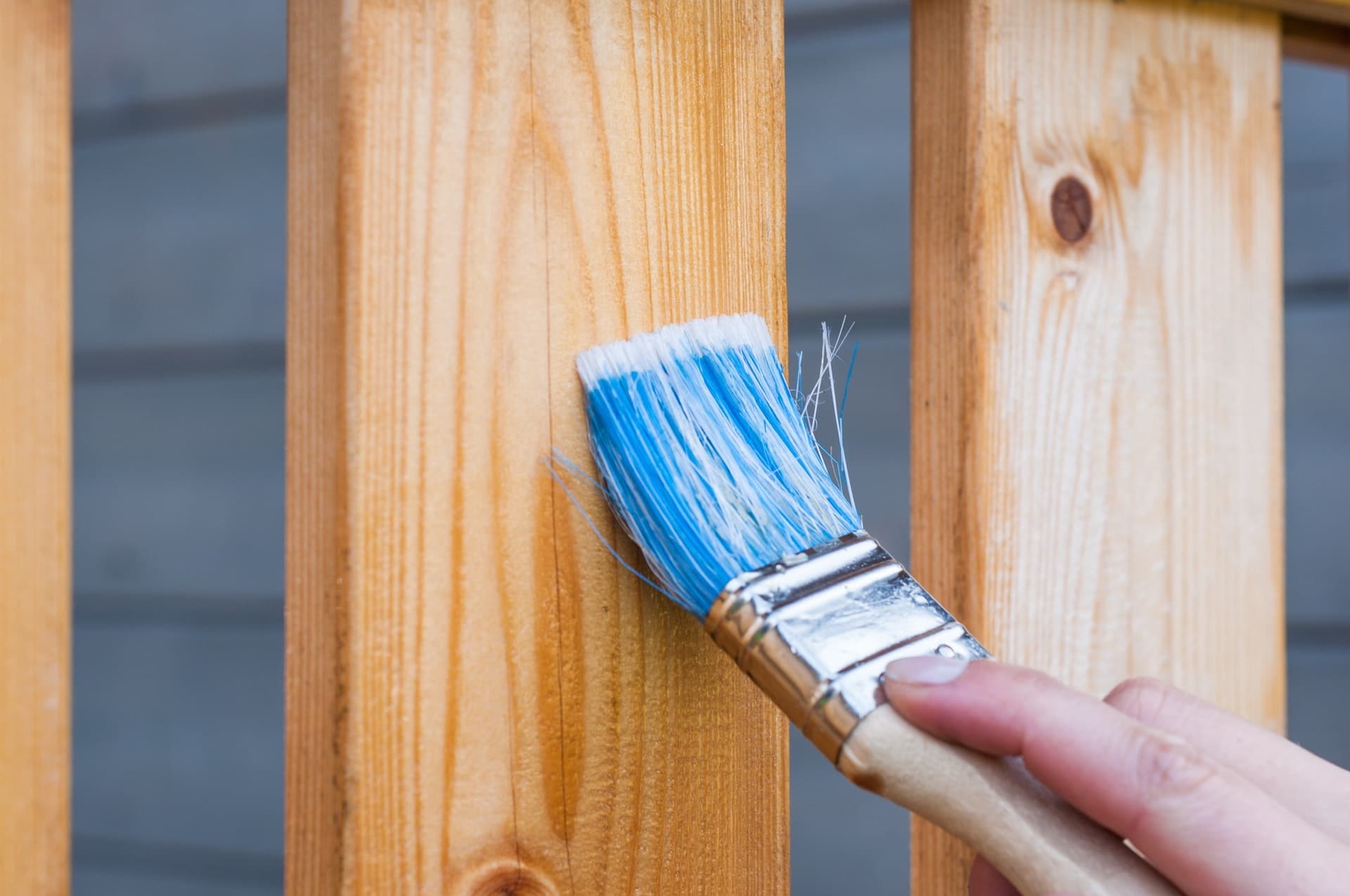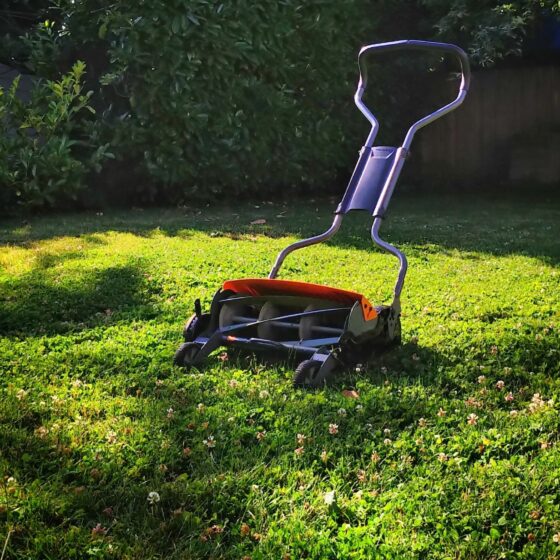To give your woodworking project the best chance of looking as good as new for years to come, you need a finish that can protect it from all its natural enemies (e.g., scratches, water, and pest infestation).
Since polyurethane is the most popular type of finish, we’ll compare its two main varieties (oil vs water-based polyurethane) here and help you decide which one fits your needs better!
What’s a Polyurethane Finish?
Polyurethane is a liquid plastic finish that can be used on wood, metal, or plastic. It’s one of the most durable high-quality finishes (more durable than other wood coatings like shellac and varnish) that protects your wood and other surfaces from wear and tear.
Polyurethane finish comes in two varieties:
- Oil-based polyurethane
- Water-based polyurethane
They both have pros and cons you should be familiar with to wisely decide which one is better for your project. That’s why we need to discuss a few of their characteristics, such as appearance, color, toxicity, etc.
Appearance
The first thing you need to think about before choosing the right type of finish is whether you want your flooring to stand out or look as subtle as possible.
Although both water and oil-based polys can provide you with a quality finish and make your floor look great, they don’t look the same.
When you take a look at water-based vs oil-based polyurethane floors, it isn’t hard to tell the difference:
- Water-based polys have a more toned-down, natural look.
- The oil-based finish offers more shine.
Sheen Level
Depending on the sheen, there are four types of polyurethane finishes:
- Matte
- Satin
- Semi-gloss
- High-gloss
The first reflects the least light, while the last reflects the most light.
Satin vs Semi-Gloss Polyurethane
Due to a higher flattening paste (or zinc oxide) content, a satin polyurethane finish reflects less light, making it duller and less shiny than semi-gloss polyurethane.
Semi-gloss polyurethane finish contains a lower level of flattening paste and, therefore, reflects light better, resulting in shinier surfaces.
Color
Water- and oil-based polys also differ in terms of color.
While the choice of poly doesn’t make much difference if you intend to use it on darker flooring, it’s crucial for those with lighter (white, maple, light gray, gray-stained, etc.) flooring.
Oil-Based Poly
Oil-based polyurethane floor finish offers more color depth, as it has a slightly yellowish color/amber hue, which intensifies over time.
So, if you prefer some color on your floors or furniture, oil-based polyurethane is an excellent choice. However, if you have gray-stained or white-washed floors, it’s best to avoid this type of finish.
Water-Based Poly
On the other hand, water-based polyurethane is clear and has little to no effect on the hardwood coloring. So, if you’re looking for polyurethane for floors that’ll make wood look as natural as possible, water-based polys are the way to go.
Durability
Both oil-based and water-based polyurethane finishes are durable and effectively protect your floors from scratches and water damage. Still, there are certain differences in terms of durability.
Oil-Based Poly
Oil-based polyurethane is slightly more durable than water-based options (it typically keeps looking intact for 7–10 years). Opting for this option would mean a less frequent need to refinish your floors.
Water-Based Poly
On the other hand, water-based polyurethane can last anywhere between three and five years.
Ease of Use
Overall, oil-based polyurethane is a bit more difficult to use than water-based polyurethane for two reasons:
- Application
- The necessary number of layers
Application
Oil-based and water-based polyurethane finishes are applied differently. Oil-based poly is generally brushed on, while water-based poly can be sprayed or rolled on.
That being said, water-based polyurethane is typically much easier to use—the application is as simple as applying the finish and letting it dry.
The Ideal Number of Coats
Oil-based and water-based polyurethane also differ in terms of the number of layers that need to be applied.
Water-Based Polyurethane
When it comes to applying a water-based polyurethane finish, you’ll need at least three coats (preferably 4–5).
Oil-Based Polyurethane
On the other hand, only three coats are usually enough with oil-based finishes. Just bear in mind you’ll most likely need to sand the wood after each coat.
You can also opt for a one-coat poly—a thicker, oil-based polyurethane that dries faster. The only downside of it is the high risk of uneven finish with visible brushstrokes.
It can be tricky to get the finish looking perfect, so, needless to say, it’s important to follow the instructions carefully.
Drying Speed
Oil-based polyurethane takes longer to dry than water-based polyurethane. So if you’re in a hurry, you may want to opt for the water-based type.
Oil-Based Polyurethane
You’ll need to wait for at least 24 hours after applying oil-based polys to your floor before it’s safe to walk on and at least 48 hours before it’s safe to put your classy floor lamps and other furniture back into the room.
The waiting time between coats is typically 10–24 (8 with some products). To further speed things up, you can use fast-drying oil-based products that allow you to apply the next coat in as little as four hours.
Water-Based Polyurethane
Water-based polyurethane dries more quickly than oil-based polyurethane, usually taking 24 hours to become safe for use. It typically takes 2–3 hours before it’s safe to apply the next coat.
So, applying five water-based poly coats will take as much time as applying two oil-based poly coats.
Curing Time
Another major difference between oil-based and water-based polyurethane is the time it takes for them to cure completely. Curing is the process in which the finish hardens and becomes entirely water-resistant.
Oil-Based Polyurethane
Oil-based poly takes longer to cure than water-based options since the curing process can last up to 30 days.
Water-Based Polyurethane
Water-based poly cures two times faster than oil-based variants. It takes about 14 days for it to completely cure. So, if you need your floors or furniture back in use quickly, water-based polyurethane is a better choice.
Toxicity
Both types of finishes can be harmful if inhaled or ingested, so it’s important to use them in a well-ventilated area and to keep them out of reach of children and pets. Still, there are certain differences between the two in terms of the amount of volatile organic compounds (VOCs).
Oil-Based Poly
Oil-based polyurethane is more toxic than water-based polyurethane since it contains VOCs. These substances are released into the air when the finish is applied and can cause respiratory problems, headaches, and nausea when inhaled.
Water-Based Poly
Water-based polyurethanes contain lower levels of VOCs and are, therefore, less toxic.
Smell
The intensity of the smell is another characteristic that plays an essential role in choosing the right type of poly for your DIY project.
Oil-Based Poly
Oil-based poly has a strong smell that can last for days, even after the finish has dried.
Water-Based Poly
Water-based poly has little to no odor. This makes it a better choice for indoor projects and a safer option for people sensitive to strong smells.
Cost
A significantly higher price (water-based polyurethane’s price tends to be 2–3 times higher than that of oil-based polyurethane) is one of the major disadvantages of water-based polyurethane.
However, we can’t say using water-based poly doesn’t pay off. Using water-based poly entails a prompt application that allows you to finish the job faster and avoid getting charged for repetitive visits from your flooring contractor.
Maintenance
You should also get familiar with the maintenance-related pros and cons of both types of poly before choosing the right one.
Oil-Based Poly
Oil-based poly is thicker and softer than water-based poly. This makes it more susceptible to dents.
Water-Based Poly
On the other hand, water-based poly provides a thinner but harder coating, so water-based polyurethane floor finish is more susceptible to surface scratching.
Maintenance Tips
With proper care and maintenance, hardwood floors can last for generations. Here are a few tips on how to make it happen:
- Sweep or vacuum the floor regularly to remove dirt, dust, and debris.
- Mop the floor with a damp mop or cloth.
- Avoid using too much water while cleaning.
- Place furniture pads under heavy furniture to prevent scratches and dents.
- Use only high-quality hardwood floor cleaners and other gentle, pH-neutral products.
- Avoid using harsh chemicals and cleaners.
- Refinish your floors every few years.
Conclusion
So, is oil-based or water-based polyurethane better?
The decision is up to you. If you’re looking for a highly durable finish, oil-based paints are the way to go. Otherwise, a water-based product should work just fine. Plus, it’s easier to apply and dries much faster.
FAQ
Can you sleep in-house after using polyurethane finishing?
No. The fumes the finish releases are harmful and can make you and your pets sick.
While you can safely spend a short time in the freshly polyurethaned room, you shouldn’t sleep there. You should wait at least 72 hours after application to start spending more time in that room.
Is water-based polyurethane waterproof?
No. Neither oil- nor water-based polyurethane finishes make floors waterproof. However, they do provide them with a dose of water resistance.
Both oil and water-based polyurethane finishes repel water and prevent moisture absorption, although they never fully obstruct water nor make wood 100% waterproof.
How long does water-based polyurethane last?
A quality water-based poly finish can keep its maximum lust up to five years, requiring refinishing every three to five years.
On the other hand, oil-based poly finishes are more durable, with quality finishes lasting up to a decade.
What is the downside of oil-based polyurethane?
Oil-based polyurethane takes a long time to dry. It can take up to 24 hours for the finish to cure, and it may take several days for it to reach its full hardness.
You’ll also have to avoid spending time in the room for about three days to avoid inhaling toxic fumes.
What is the main disadvantage of using water-based polyurethane?
Water-based polyurethane can raise the grain of the wood and make it rough-looking. This happens because water-based polyurethane is absorbed into the wood, causing the grain to swell as it dries.
The easiest way to avoid this is to sand the wood before (or after) applying water-based polyurethane.
Which is better: water– or oil-based polyurethane for hardwood floors?
The answer to this question depends on your specific needs and preferences.
But how to pick the right one (oil vs water-based polyurethane)?
For example, oil-based polyurethane is a good option if you’re looking for a very tough and durable finish.
On the other hand, water-based polyurethane may be a better choice if you’re looking for easy application, less odor, and a more natural look. Additionally, you should know that water-based polys are about two to three times costlier than oil-based ones.













